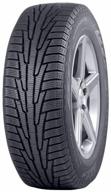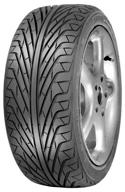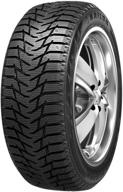
Review on 🚚 Fastway e2 2-Point Sway Control Trunnion Hitch: 10,000 lbs Trailer Weight Rating, 1,000 lbs Tongue Weight Rating, With Weight Distribution Kit, Standard Hitch Shank & Ball Included by Kevin Carr

Surpasses the traditional chain style. Improved Ground Clearance
I have a 2017 Toyota Tacoma TRD Double Cab and a 2015 Jayco 185RB Baja stacker (3000 lb) trailer. I was ready to tow a trailer without a weight distribution hitch (WDH). Then when I was ready to use the WDH I wanted to buy a traditional chain style WDH from Curt until another RVer told me about this pin style WDH. I'm really glad I changed my mind and started using WDH, even for a small trailer, and I'm glad I spent the extra money on a trunnion style WDH. Pros: - Detailed installation and setup instructions and video. available on YouTube. I installed it in about 1.5 hours. An incredible difference compared to not having WDH, even if the tractor can pull safely without it. I really liked how it locked the ride height and kept the front of the truck from sticking in the air. Without the WDH, the combination of trailer and tractor was much springier on the road. WDH strengthened the connection and made the ride more comfortable. Strong as a rock in a strong wind. I didn't notice any swaying in gusts of wind from passing tractor trailers or strong crosswinds in Texas and Kansas. My concerns about excessive noise due to metal-on-metal friction preventing swaying were unfounded. It doesn't creak or groan any more than any other trailer I've towed. In fact, I'm having a hard time figuring out if the noise is just the usual creaking and groaning of the trailer frame and ball joint or if it's the pintle noise. Also, it only makes noise when cornering. I find that the occasional squeak or groan from the spigot can be easily tolerated given the hitch's other characteristics. My rig doesn't need a clutch tensioner to prevent rattling. The pivots seem to put enough force on the shaft that the receiver doesn't wobble like my other non-WDH trailers. - I never loosen the pivots when reversing. Trucks and trailers - no problem. Contact between truck and trailer is the limiting factor, not WDH. When properly installed, the trunnions are long enough to accommodate this rotation - Includes a crossbar to hold the trunnions in place with a lever. However, it is also possible to attach a ball mount and use a trailer jack to raise the trailer and truck. Depending on your setup, the trunnions may simply snap into place with no effort. Because the pegs protrude directly from the shank, rather than hanging under the trailer frame like a traditional chain-style WDH, I get a lot more. Ground clearance that goes well with my raised trailer. Cons: Installation technically requires a torque wrench capable of handling 420 lb-ft for the ball joint and 250 lb-ft for the shank bolts. This is usually well above what the average homeowner has. If the stem is noisy, an external tensioner (such as an anti-rattle stabilizer) must be used instead of an internal tensioner because the stem is strong. Price? Of course, this is $210 more expensive than traditional WDH's like the Curt 17062 Weight Distribution Hitch and Anti-Sway Bar. However, because the anti-sway bar and weight distribution are built into one piece, rather than drilling holes in my trailer's frame for a separate anti-sway mechanism to install, increased ground clearance for my raised caravan and backup ability. no interruption makes that extra $210 an easy task for me. The time savings and frustration quickly paid off for the updated WDH. The nuts on the L-brackets regularly loosened even though I tightened them to the required 75 lb-ft torque and despite the lock washers. I'll either have to tighten them harder or install a second locknut. It is expected that the tie plate mounting bolts will be torqued to 65 lb-ft. However, at this torque - and even though the mounting bolts are right next to my trailer's frame - the link plates flex and create gaps along the frame. The metal doesn't seem strong enough. As a workaround I put metal bushings on the screws to keep the plates from bending. Remarks. Before tightening the L-Bracket, make sure the stud is laying flat on the L-Bracket so there is full contact between them. I tightened my L-bracket with a slight squint, letting the tang rub against the edge of the L-bracket until I secured it. The ball mounting hole in the shank is for a 1 1/4" shank ball. The one I already have has a 1" shank diameter, so I had to buy a bushing. I immediately replaced the two trunnion locking pins with a 3/16 -Replaced inch cotter pins from Tractor Supply (99 cents each) Much safer and easier to use.
- Ease of Use
- Quick Start Guide
New products
Comments (0)
Top products in 🛴 Motorcycle Accessories
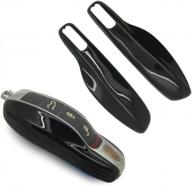
Black Keyless Remote Key Case For Porsche Cayenne Panamera - Carmonmon Smart Protectors Plastic Cover Side Blades.

43 Review

Smart speaker Yandex Station Mini without clock with Alice, blue sapphire, 10W

96 Review
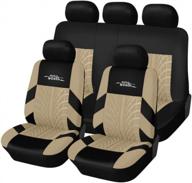
AUTOYOUTH 9Pc Beige Car Seat Covers Set - Front Bucket & Split Bench Protectors For Women

36 Review
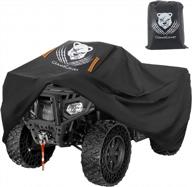
Heavy Duty Waterproof Outdoor ATV Cover XXL 89" - 420D Oxford Cloth, Anti-Fade UV Protection For Kawasaki Yamaha Suzuki Honda Polaris Can Am

40 Review


